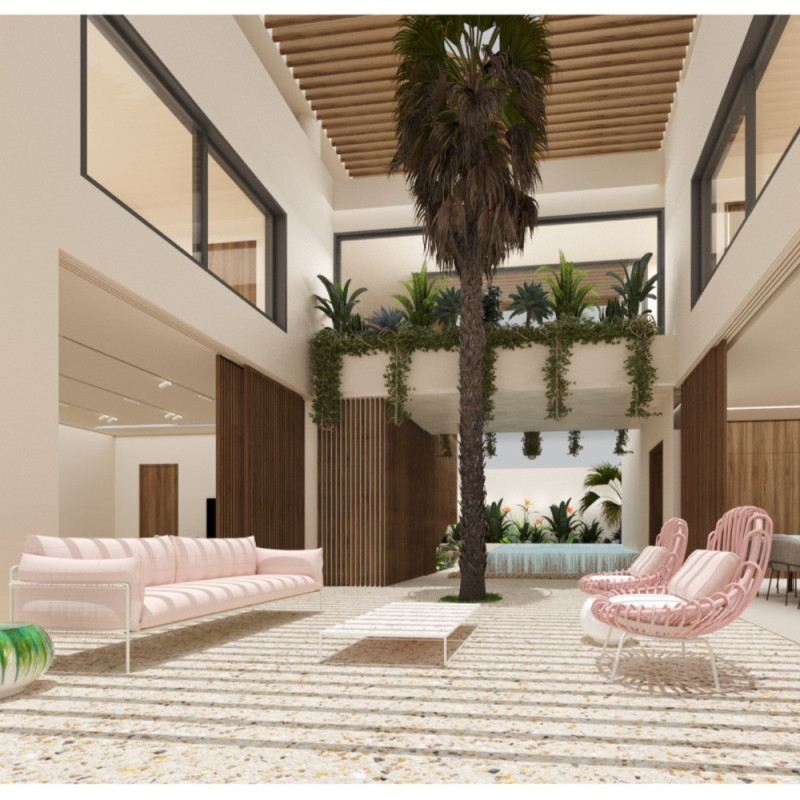5 key facts about this project
At its core, the project embodies a commitment to sustainability and community engagement. The architectural design prioritizes natural light, ventilation, and energy efficiency, ensuring a reduced environmental impact. The use of local materials not only enhances the aesthetic quality of the structure but also strengthens the connection to the surrounding geography. This project stands as a fine example of how architecture can serve both people and the planet by integrating sustainable practices seamlessly into its very fabric.
Important components of the project include expansive communal areas that encourage social interaction and collaboration. These spaces are designed to be versatile, accommodating a variety of activities and fostering a sense of community. Each room is meticulously planned, with attention given to sightlines and accessibility, ensuring that users can navigate the space with ease. The incorporation of greenery—both inside and outside—further enriches these areas, blurring the lines between the built and natural environments.
Unique design approaches are evident throughout the project. The architects have employed innovative techniques to achieve a contemporary aesthetic while maintaining functionality. For instance, the use of large, transparent facades allows for abundant natural light while providing stunning views of the surrounding landscape. This not only enhances the user experience but also reduces the reliance on artificial lighting throughout the day.
The project also illustrates a strong commitment to modular design principles. By creating flexible interiors that can adapt to changing needs over time, the architects have ensured that the structure will remain relevant and useful for many years. Movable partitions and multi-purpose furniture enhance this adaptability, allowing spaces to be transformed for different uses as required.
Another notable aspect of the design is the thoughtful integration of technology. Smart building systems optimize energy consumption, monitor environmental conditions, and enhance user comfort. The architects have considered not just the initial build but also the long-term operation and maintenance of the structure, reflecting a holistic approach to architectural design.
This project exemplifies how architecture can foster connections among individuals while being responsive to environmental concerns. Each detail serves a purpose and contributes to the overarching vision of a space that is both functional and aesthetically pleasing. The careful consideration of materials, spatial relationships, and community-oriented design practices results in a well-rounded architectural outcome.
To explore this project further, readers are encouraged to delve into the architectural plans, sections, and design documents that illustrate these concepts in greater detail. Such resources provide valuable insights into the architectural ideas that shaped this project and shed light on the methodologies employed throughout the design process. Engaging with these materials will enhance understanding of how this project not only meets the needs of its users but also contributes meaningfully to the architectural landscape.


 Omar Oueini,
Omar Oueini,  Adam Kobeissy
Adam Kobeissy 























